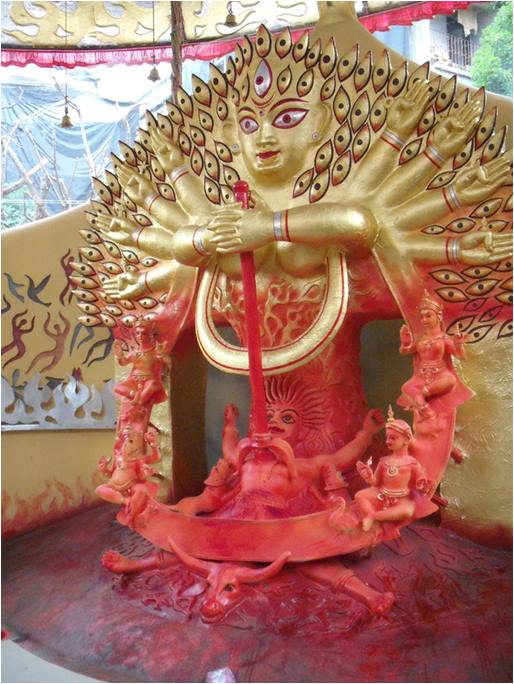
ILHAM PUBLIC LECTURE
Guest Speaker: Tapati Guha-Thakurta
25 NOV 2017, 3:00pm
Level 5, ILHAM Gallery
The ILHAM Public Lectures, a series of lectures with renowned art historians and researchers, are part of ILHAM’s long-term aim to promote a greater understanding of modern and contemporary art. Through a number of talks that will be held annually, the series gives the public the opportunity to hear from major scholars in the fields.
The lecture series is presented in collaboration with the Visual Art Program, Cultural Centre, University of Malaya where invited speakers will also be conducting a post-graduate seminar for students at the University of Malaya during their time in Kuala Lumpur.
All talks are free and open to the public. Limited spaces. Please register your interest with [email protected]
Our third eminent speaker will be Tapati Guha-Thakurta, Professor of History at the Centre for Studies in Social Sciences, Calcutta. She will be speaking on ‘CONTESTING CAREERS OF THE ARTWORK AND THE RELIGIOUS ICON IN CONTEMPORARY INDIA’.
This lecture explores the contentions and paradoxes that have arisen from the blurring of distinctions between the ‘artistic’ and the ‘religious’ object across different institutional and public sites in contemporary India. In the first part, it revisits the unremitting Hindu right-wing campaign against India’s most iconic modern artist, Maqbool Fida Husain, for his alleged ‘offence’ of painting nude Hindu goddesses – a campaign that forced him into a life of exile and showed up as never before the vulnerabilities of the nation’s modern art edifice. If the ‘Husain affair’ came to exemplify the siege of culture by the Hindu Right, it also threw open a deep instability in the status of the nation’s artistic and religious imagery and in the changing representational licenses they enjoy.
The second part of the lecture turns to a contrary set of conflations between the ‘sacred’ and ‘secular’ dispensation of objects, as they move in and out of a vortex of overlapping identities in new fields of display and spectatorship. It takes up the striking reconfiguration of Durga icons as ‘works of art’ in the streets of Calcutta’ during the city’s annual Durga Puja extravaganza, to think about the porous boundaries that allow the ‘artistic’ and the ‘religious’ the liberty to trespass into and inhabit each other domains. At the same time, it also addresses the ambivalences that lie embedded in the claims of ‘art’ and ‘artist’ in this space of ephemeral mass festivity.
The final part of the lecture returns to the sphere of contemporary art practices, to profile a different order of license and parody in the works of the Bangalore and Delhi-based artist, N. Pushpamala, that calls into question the sanctity and self importance of both the ‘religious’ and artistic’ icons of the nation. Through each of these instances, my main concern is to ask how secure is the habitus of ‘art’, what kinds of rights over iconographies can it nurture, and what degree of privilege and protection can it confer on images and their makers.
ABOUT THE SPEAKER
TAPATI GUHA-THAKURTA is Professor in History and has just finished her term as Director of the Centre for Studies in Social Sciences, Calcutta (CSSSC). Her two main books are The Making of a New ‘Indian’ Art: Artists, Aesthetics and Nationalism in Bengal (Cambridge University Press, 1992) and Monuments, Objects, Histories: Institutions of Art in Colonial and Postcolonial India (Columbia University Press, and Permanent Black, 2004).
She has written widely on the art and cultural history of modern India, and has authored several exhibition monographs – among them, Visual Worlds of Modern Bengal: An introduction to the archive of the Centre for Studies in Social Sciences, Calcutta (Seagull, Kolkata, 2002), The Aesthetics of the Popular Print: Lithographs and Oleographs from 19th and 20th Century India (Birla Academy of Art and Culture, Kolkata, 2006), The City in the Archive: Calcutta’s Visual Histories (Calcutta: CSSSC, 2011).
She has recently co-edited two anthologies of’ essays – Theorising the Present: Essays for Partha Chatterjee (Delhi: OUP, 2011) and New Cultural Histories of India: Materiality and Practices (Delhi: OUP, 2013). Her latest book is called In the Name of the Goddess: The Durga Pujas of Contemporary Kolkata (Delhi: Primus Books, 2015).
—
KULIAH UMUM ILHAM
Pensyarah Tamu: Tapati Guha-Thakurta
25 NOV 2017, 3:00ptg
Tingkat 5, Galeri ILHAM
Kuliah Umum ILHAM, satu siri syarahan oleh tokoh-tokoh sejarawan dan pengkaji seni terkemuka, adalah sebahagian daripada matlamat jangka panjang ILHAM untuk meningkatkan lagi pemahaman mengenai seni moden dan kontemporari. Menerusi beberapa syarahan yang akan diadakan pada setiap tahun, siri ini akan memberi peluang kepada orang ramai untuk mendengar pembentangan oleh sarjana-sarjana penting di dalam bidang ini.
Siri syarahan ini dilangsungkan dengan usaha sama Program Seni Visual, Pusat Budaya, Universiti Malaya, tempat di mana para pembicara jemputan akan turut mengendalikan seminar lepasan ijazah untuk pelajar-pelajar Universiti Malaya sepanjang mereka berada di Kuala Lumpur.
Masuk adalah percuma dan terbuka untuk umum. Tempat adalah terhad. Untuk pendaftaran sila emel kepada [email protected]
Penceramah jemputan ketiga kami ialah Tapati Guha-Thakurta, Profesor Sejarah di Centre for Studies in Social Sciences, Calcutta. Tajuk syarahan beliau adalah, ‘PERTIKAIAN KARIER ANTARA KARYA SENI DAN IKON KEAGAMAAN DALAM INDIA MASAKINI’
Syarahan ini meneroka perbalahan dan paradoks yang timbul dari kekaburan antara objek artisitk dan spiritual di institusi-institusi dan ruang-ruang awam di seluruh India kontemporari. Untuk bahagian pertama, syarahan ini melawat kembali gerakan kempen besar-besaran terhadap artis ikonik India, Maqbool Fida Husain oleh puak Hindu berhaluan kanan di atas dakwaan ‘kesalahan’ menghasilkan catan bogel dewi Hindu – sebuah kempen yang memaksa Husain hidup dalam buangan dan mencatatkan kerentanan yang tidak pernah ditonjolkan di dalam seni moden kebangsaan.
Jika ‘kisah Husain’ ini menjadi contoh penawanan budaya oleh Hak Hindu, ia juga memperlihatkan ketidak stabilan yang mendalam terhadap status imejan artistik dan keagamaan kebangsaan dan di dalam peralihan lesen representasi yang dinikmati oleh mereka. Bahagian kedua syarahan pula akan beralih ke pertindihan di antara ‘sakral’ dan ‘sekuler’ di mana identiti keduanya sering timbul di dalam lapangan peragaan dan tontonan yang terkini. Ia mengambil konfigurasi semula yang ketara terhadap ikon Durga sebagai ‘karya seni’ di jalanan Calcutta semasa upacara tahunan Durga Puja untuk menghala kita terfikir tentang ketirisan batasan yang membenarkan ‘artistik’ dan ‘agama’ untuk bergerak bebas mencerobohi daerah masing-masing. Pada masa yang sama, ia juga mengemukakan perasaan berbelah-bagi yang tertanam di dalam tuntutan ‘seni’ dan ‘artis’ di acara perayaan besar.
Bahagian akhir syarahan kembali ke dalam lingkungan praktik seni kontemporari, untuk mendapatkan profil lesen yang berbeza dan parodi di dalam karya-karya artis Bangalore dan Delhi, N. Pushpamal, yang mempersoalkan kesucian dan kepentingan kendiri ikon ‘keagamaan’ dan ‘artistik’ kebangsaan. Melalui contoh-contoh ini, persoalan saya terarah kepada sejauh mana habitus ‘seni’ ini terjamin, jenis hak ikonografi yang mana boleh dipupuk, dan setinggi mana keistimewaan dan perlindungan kepada imej dan tukangnya.
TENTANG PENCERAMAH JEMPUTAN
TAPATI GUHA THAKURTA merupakan Professor Sejarah dan baru sahaja menamatkan tempoh tugasan beliau sebagai Pengarah Centre for Studies in Social Science, Calcutta (CSSSC). Dua buku utama beliau adalah The Making of a new Indian Art: Artists, Aesthetics and Nationalism in Bengal (Cambridge University Press, 1992) dan Monuments, Objects, Histories: Institutions of Art in Colonial and Postcolonial India (Columbia University Press, and Permanent Black, 2004).
Beliau banyak menulis dengan meluas tentang seni dan sejarah budaya India moden, dan telah mengarang beberapa monograf pameran – antaranya, Visual Worlds of Modern Bengal: An introduction to the archive of the Centre for Studies in Social Science, Calcutta (Seagull, Kolkata, 2002), The Aesthetics of the Popular Print: Lithographs and Oleographs from 19th and 20th Century India (Birla Academy of Art and Culture, Kolkata, 2006), the City in the Archive: Calcutta’s Visual Histories (Calcutta: CSSSC, 2011).
Baru-baru ini beliau telah menjadi editor bersama untuk dua antologi esei – Theorising the Present: Essay for Partha Chatterjee (Delhi: OUP, 2013) dan New Cultural Histories of India: Materiality and Practices (Delhi: OUP 2013). Buku terbaru beliau bertajuk In the Name of Goddess: The Durga Pujas of Contemporary Kolkata (Delhi: Primus Books, 2015).



